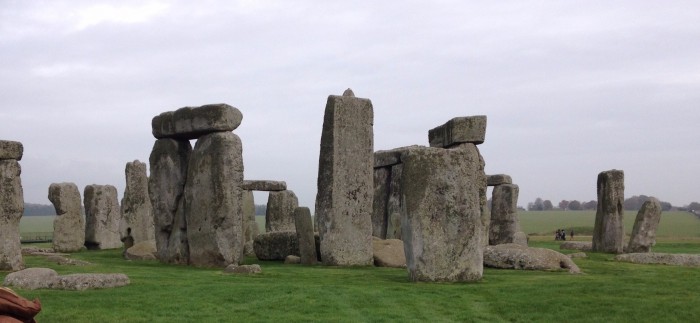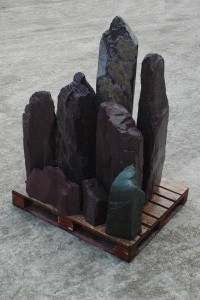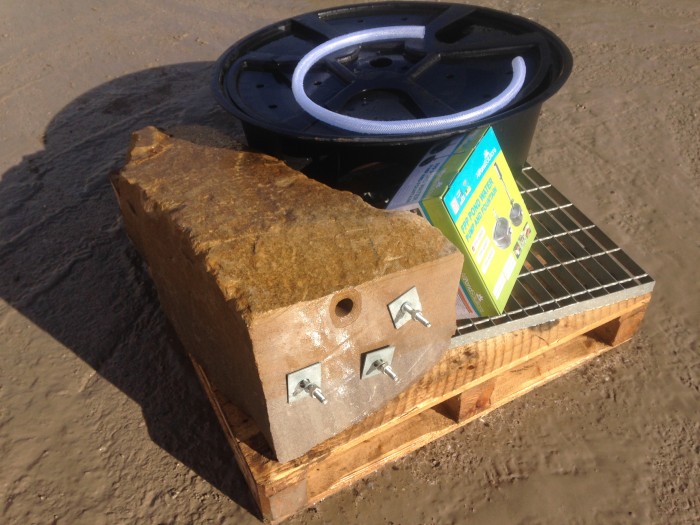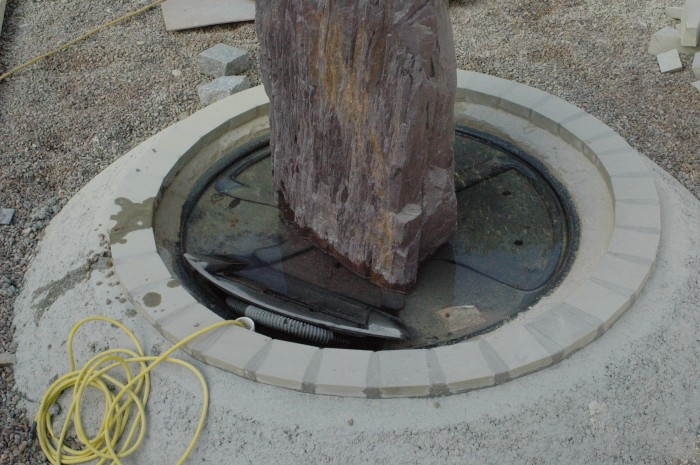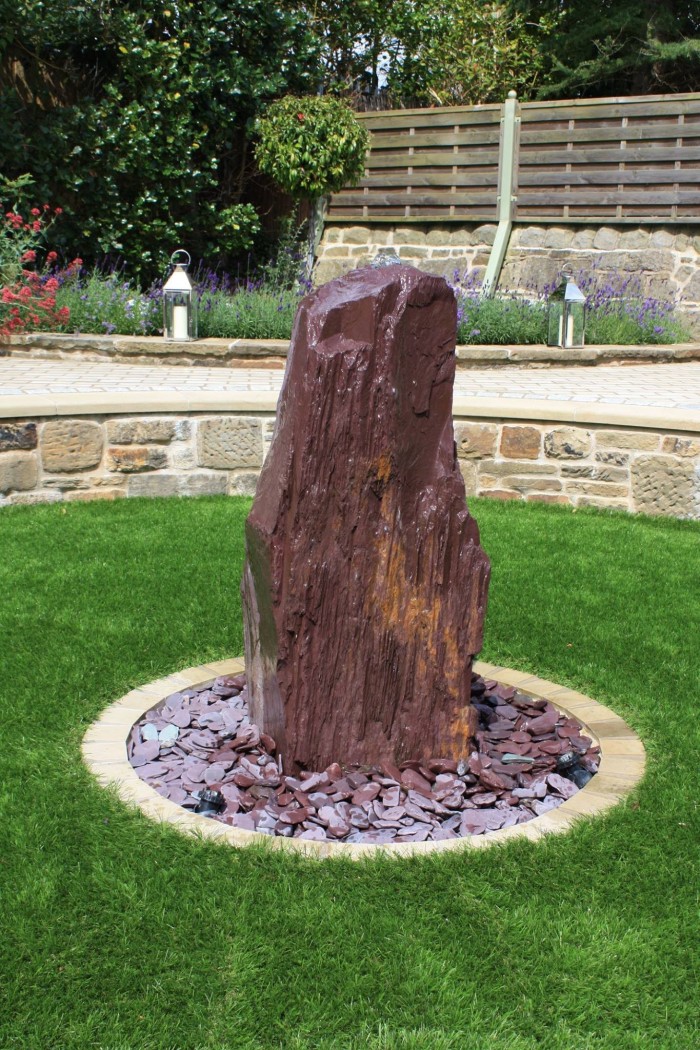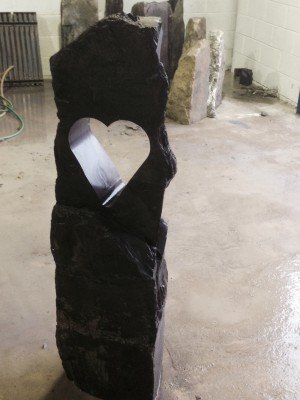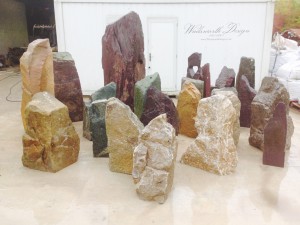Search Results for: MONOLITHS
Stone Monoliths, why are they so fascinating?
Comments Off on Stone Monoliths, why are they so fascinating?
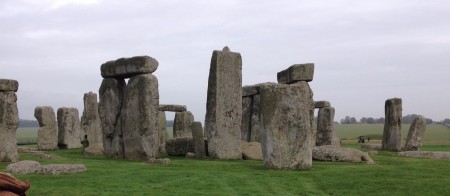
At Wadsworth Design one of our main products is slate monoliths. Every year we get customers from all over the united kingdom looking for that perfect piece of stone for their garden. Some people are looking for thin, slender standing stones, where as others want a large chunky piece. Everyone seems to have a different idea of their perfect stone. We have couples and families coming to view our stone monoliths and sometimes arguing for hours over which monolith they prefer!
So why do stone monoliths create so much enchantment?
The simplicity of standing a long shaped stone on end is an age old tradition, Is it something in our bloodline? For thousands and thousands of years we seemed to have marked important areas by standing stones on their end. A great example is Stonehenge which dates back to 2000 -3000BC they too transported stone from different areas of the country to create stunning stone features.
Most ancient monolithic stones sites have been related to the alignment of the sun, where shadows and rays coming through the stones appear to have been used to read the seasons, years and time.
However you put it stone monoliths have obviously played a huge part in the lives of human kind. The scale of stone henge, and the hundreds of other ancient sites where stones have been up righted. In fact some 50,000 sites across Europe, Africa and Asia have megalith stones.
Maybe its the orientation and unnatural stance of the stone which brings the admirer to question how it got there. Especially with the larger ancient stones. To think with all we know at this current time and we still cannot clearly say how Stonehenge was created is incredible. I think this is why standing stones are so fascinating, for our beloved gardens its almost sets a territory, an achievement. Its not a flat lying stone that we see all over the natural world. A monolith is a statement, and even in small forms a stone monolith provokes the admirer with the fact that someone or something has been there and changed the position of that natural stone.
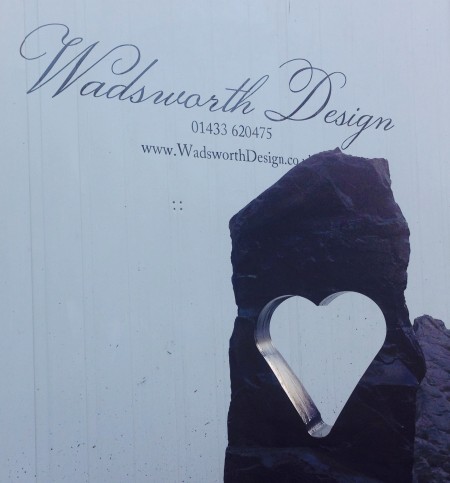
Romance Monolith
Our new Romance monoliths are a product we have wanted to create for a long time, although we had been able to process the cut for a long time we weren’t able to polish out the saw marks to what we considered a high enough standard. This week we acquired the tooling to make it possible. So our exclusive romance monoliths will be available as stand alone pieces and as water features very soon. They require a lot of work and its a product we’ve been wanting to get exactly right before putting it in our shop. Although they will be listed there each one will be made to order, we will also be able to engrave the inside of the heart and add other features at your request.
Garden Design
Comments Off on Garden Design
Here we offer some advice on different aspects of your garden from choosing colours through to construction.
Trade Accounts
Comments Off on Trade Accounts
How does a monolith work as a water feature?
Comments Off on How does a monolith work as a water feature?
If you purchase one of our slate monoliths as a water feature, then we will have drilled the Stone after cutting the base. We accurately drill to where we believe is the best location for the hole to appear at the top of the stone. Our diameters of the drill hole does vary depending on the stone but most of our monoliths are either 32, 37 or 38mm unless stated or requested differently.
The drill hole at the bottom of the stone will look something like this (the securing bolts are an optional extra and don’t come on standard monoliths}:
Most installations are achieved by sitting the stone onto a reservoir which collects the water that has come out of the monolith. A submersible pump ( this is a pump which sits underwater) is used to pump the water out of the reservoir and up the monolith. The water is reused over and over again to give an appearance of a constantly flowing water feature. The reservoir position is shown more clearly below:
The reservoir is usually sunk into the ground or has a small wall built around it to disguise it and then decorative pebbles used to hide the top of the reservoir as shown below:
Choosing a garden monolith
Comments Off on Choosing a garden monolith
Garden Monoliths or standing stones are a beautiful and popular product of ours. We sell them in many different types of stone and with different varieties of water features. Our standard water feature monoliths involve us carefully selecting a piece of natural stone and sawing it to create a standing stone feature. We then drill from the base upwards to the top using highly specialized diamond drill bits, the hole through the middle of the stone enables water to be pumped from a water reservoir (usually created underneath the stone) to the top of the stone without any visible pipes. The water erupts from the peak of the stone creating a stunning water feature which enhances the colour of the stone and gives the lovely relaxing sound of falling water.
With our more sophisticated drill techniques we are able to create other water features such as our Romance monoliths, porthole monoliths and Letterbox monoliths.
Choosing the right stone for your garden is mostly about personal taste, but here are some things to consider:
Colours
We make a large range of monoliths from Green slate through to Limestone. Although the slate monoliths were the first most of us saw in the garden centers, Limestone and sandstone monoliths are now becoming just as popular. The slate provides a beautiful contrast of colour to most gardens and the limestone and sandstone monoliths give more subtle and traditional appearances to Landscapes.
Along with the style that you are trying to achieve in your garden, its also good to consider the colours already present. I would suggest a contrast to the buildings around to make the water feature stand out. If you are set on matching the stone with the house colour then adding a contrasting pebble base with the stone will also have wonderful effects. A colour combination that I am particularly fond of is light grey limestone such as our Cathedral cobbles along with blue slate monoliths or vice versa. I think it is a very prestigious looking blend of colour and works well with most gardens.
Styles
Creating a unique look in your garden is important to a lot of us. With our range of styles I am sure you will be able to find a stone that suits you. If you are looking for something very unique then its worth looking at our bespoke monolith section. Pictured is our romance monolith a slate porthole stone which is a different style from the traditional monoliths.
Height & Size
Bigger is occasionally not better! From time to time we do have to exchange monoliths that have turned up at an address because there is no back entrance to the garden and the 1.8m , 500kg monolith we supplied is proving too difficult to be carried through the house! Generally as the monoliths get taller, they get bulkier. This means that the difference between a 100 cm monolith and a 150 cm one can mean a 200% rise in weight.
If you are in doubt please get in touch. We can help plan and select monoliths that will be suitable and manageable for you to get in place. We have many tips and tricks for getting stones to where most people would think it impossible, but planning is definitely the key to success with this!
Besides the logistics relative size to your garden is also important. Too small and the feature wont stand out, but too large and it can be overpowering. Cardboard cutouts of the rough size of your ideal stone are a good idea so you can get a feel for how large you would like the feature to be.
Monolith Installation
Comments Off on Monolith Installation
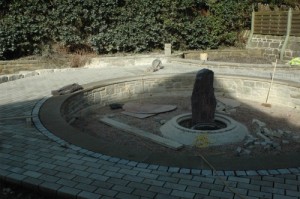
Installing a monolith well is something which takes a little extra time, but the benefits and piece of mind of doing so are enormous. Here is a guide on how to install your Slate monoliths, which provides helpful tips and explanations on how to go about your monolith project.

Its a little later than scheduled but the last few weeks marked the final stages of our concreting and yard preparation. Laying over a thousand tonnes of concrete in six months, we are now ready to start focusing more on our new products. We’ve still got a lot to do to get it just how we want, but were getting closer. As you can see the beautiful large limestone monolith is used to create an end to our curved entrance wall which is yet to be built. We will be using our new cropped limestone to construct the wall.
We also plan to build a large display area where we can run water through our monoliths to show our customers the different effects that can be achieved with pressure variation in stone monoliths.
Advice
Comments Off on Advice
Welcome to the Wadsworth Design advice page. Having worked with many landscape designs, created bespoke solutions and features for many gardens I am starting to piece together articles that hopefully you will find useful in your own garden design, Over the next few months I intend to update regularly with all sorts of useful advice from installing simple water features to building huge rockeries.
